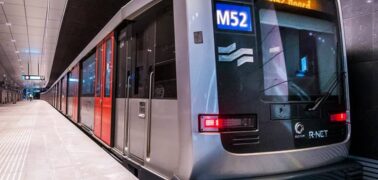GVB, the public transport operator of Dutch capital of Amsterdam, has completed a study and moved into a piloting phase of a new charging infrastructure for its electric buses.
The pilot refers to the four bus lines which serve the northern area of Amsterdam, Amsterdam Noord. GVB’s plans for installing two 360kW chargers for these buses were blocked by the grid congestion in the area.
A work-around solution is to connect the bus chargers directly to the metro grid across the street from the chargers. This way, a dedicated connection of the grid is avoided, the charger demand is bundled with the metro demand under the existing reserved capacity, and the buses could be charged with the otherwise-wasted braking energy of the metro vehicles.
Interestingly enough, a study completed by the DCE&S group of the Delft University of Technology along with the AMS Institute and GVB showed that as much as 15% of the bus charging would come from otherwise-wasted braking energy. It is also worth highlighting that the voltage, power, and contract limitations are never violated with the implementation of this solution.
GVB is now moving to the pilot phase of implementing these chargers in practice.
